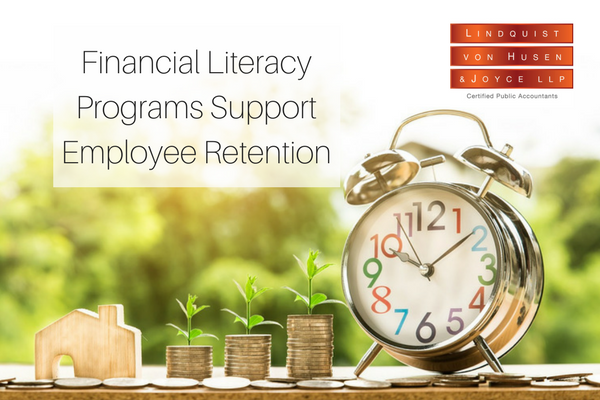
Studies coming out this year about Americans’ financial literacy and savings rates show that employers could do a lot to improve the financial wellness of their employees — at minimal cost.
A survey of 1,000 adults this year by Bankrate.com showed that 31 percent of people now have emergency funds to cover six months or more of expenses, the highest percentage since Bankrate started the survey seven years ago. However, 32 percent of people age 53 to 62 had zero dollars set aside. About a quarter of millennials had nothing in savings.
Without savings and cash flow for emergency needs, data shows that many Americans turn to alternative services like payday lending and pawn shops, where high interest rates and penalties may put them into deeper debt. For example, the Federal Deposit Insurance Corporation notes in its biennial survey that Americans are steadily obtaining bank accounts. Only 7 percent were “unbanked” as of 2015, but another 19.9 percent were “underbanked.” This means they use financial services and products outside the U.S. banking system.
Employers could support financial education for their employees that increases savings, but also retention and engagement, according to a recent article in NonProfit Quarterly. Employees who feel financially stable are less stressed and usually better able to focus on their jobs. They may also view your financial wellness program as a competitive difference when choosing to stay or take a new job.
Some examples offered in the article to support employee financial wellness include:
- Offering annual, confidential financial check-ups with a financial coach or resources through not-for-profit credit counseling agencies.
- Providing new employees with a refresher on all of their benefits. They receive this as part of their onboarding process, but a benefits refresher will remind them of their benefits or free resources available.
- Considering opt-out retirement plans to get employees off on the right foot, explaining what they are missing if they opt out.
- Talking about payroll deferral options to savings accounts that help employees save automatically.
- Exploring community loan centers in your region that work with employers to offer micro-loans to employees. This option helps employees avoid high interest options like payday loans or pawn shops.
If you would like guidance on how your company can develop a financial wellness program or manage employee benefits, talk to the Business Advisory team at LvHJ. Click to view our services here.








